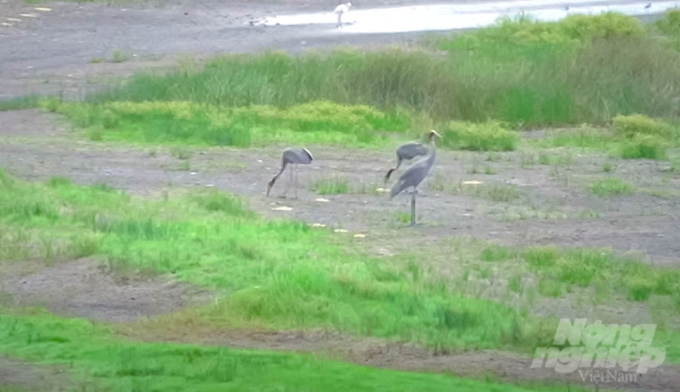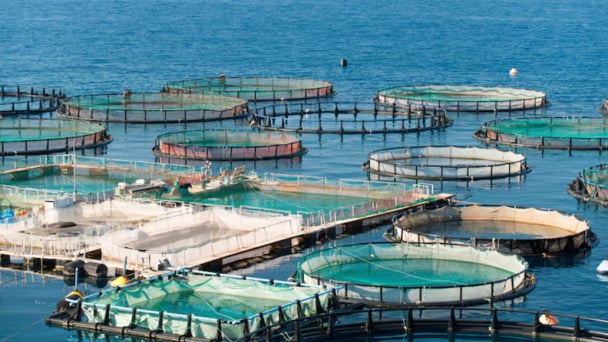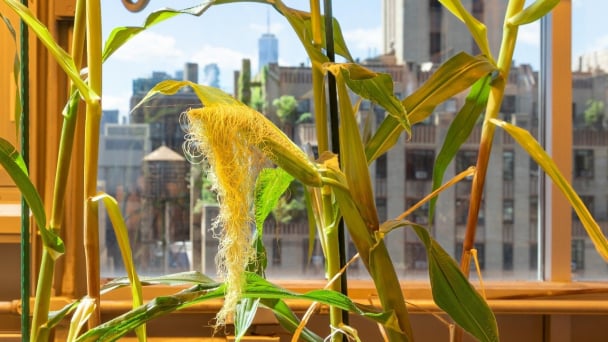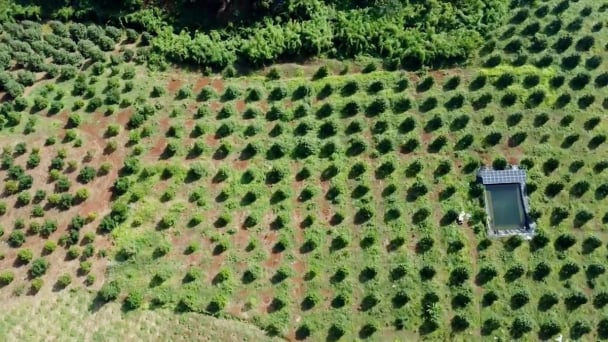June 4, 2025 | 06:41 GMT +7
June 4, 2025 | 06:41 GMT +7
Hotline: 0913.378.918
June 4, 2025 | 06:41 GMT +7
Hotline: 0913.378.918

Dong Thap is currently designating area A4 of Tram Chim National Park as a location to rear and release cranes into the wild. Photo: Le Hoang Vu.
With the biodiversity and the appearance of many grasslands, red-crowned cranes have come to Tram Chim National Park to find food over the years.
However, the number of red-crowned cranes returning to Tram Chim National Park is decreasing. In 2021, only three red-crowned cranes returned to Tram Chim, and from 2022 to now, no cranes have been seen here. The red-crowned crane is endangered in the Red Book of Vietnam and the world.
There are three species of red-crowned cranes: Indian Cranes, Eastern Cranes, and Australian Cranes. Remarkably, the Eastern Crane species occurs in Myanmar, Thailand, Cambodia, and Vietnam and has the smallest population among the three species.
Over the past ten years, wild red-crowned crane populations have declined rapidly in Cambodia and Vietnam, from 850 individuals recorded in 2010 to just under 160 individuals recorded in the most recent population census in 2022.
If this declining trend continues, Cambodia and Vietnam's wild Eastern Crane populations may soon become extinct.
Over the past ten years, many programs have been implemented to bring red-crowned cranes back to Tram Chim National Park, but there have yet to be remarkable results.
Recently, the delegation of Dong Thap province came to Tram Chim National Park to investigate and find a way to overcome and discuss how to keep the red-crowned crane's legs. Le Quoc Phong - Secretary of the Dong Thap Provincial Party Committee, expects the province to try to raise and maintain a herd of red-crowned cranes with at least 100 individuals in the next ten years.
The project has a total cost of about VND 76 billion. Accordingly, many synchronous measures will be taken, including solutions to improve the environment and change the farming practices and practices of people around Tram Chim National Park.
Also, the International Crane Foundation (ICF) and the Vietnam Zoo Association (VZA) will facilitate cooperation between the red-crowned crane population recovery programs in Thailand and Vietnam.
ICF, VZA, and the Zoological Parks Organization of Thailand will also provide technical advice and training for the staff of Tram Chim National Park on raising, releasing, and monitoring red-crowned cranes and life environmental management of cranes in the core and buffer zones of Tram Chim National Park.

The most important thing is restoring the habitat that cranes have lived in in the core zone of Tram Chim National Park.
Dong Thap is planning area A4 of Tram Chim National Park to raise cranes into the wild. Around this area is a buffer zone with an area of 1,623 hectares that will organically produce rice to create the best environment for cranes to grow and develop.
Dr. Tran Triet, Southeast Asia Program Director - International Crane Foundation, said: “The transfer of Cranes from Thailand to raise in Vietnam is necessary because it will provide us with a breed source to re-release into the wild”.
According to Mr. Triet, much work remains to be done to successfully restore the red-crowned crane in Tram Chim National Park. The most important things are to restore the habitat that cranes have lived in in the core zone of Tram Chim National Park, regulate water levels appropriately, and treat vegetation.
Also, improve the agricultural area around Tram Chim. We must have a plan to transition to clean rice production.
Dr. Thanachon Kensingh, Director of the Nakhonrachasima Provincial Zoo, Thailand, said: "The ecosystem of Tram Chim is very diverse, suitable for cranes to develop, but it is necessary to find out why over the years, from a large population of red-crowned cranes, the number has decreased rapidly, even there are times when there are no red-crowned cranes in Tram Chim.
Mr. Thanachon affirmed that Thailand has successfully conserved red-crowned cranes. Thailand is willing to share and support Tram Chim National Park in stocking and experience in preserving this crane.
The unit directly supplying cranes - Zoological Park Foundation of Thailand - commits, annually, depending on demand and ability, to provide baby red-crowned cranes to Tram Chim National Park for further rearing and release.
This process is subject to national legislation and the Zoological Park Foundation of Thailand, as well as the safety of the animals.
While waiting for the cranes to be transferred from Thailand to Tram Chim National Park, Dong Thap province is urgently leveling the ground, combining the burning of vegetation and improving the natural environment of the A4 zone accordingly, creating favorable conditions and the best ecological conditions for cranes to stick around for a long time.
Translated by Ha Phuc

(VAN) Technology is redrawing the map of Vietnamese aquaculture: more modern, greener, and more sustainable.

(VAN) Novel process harnesses machine learning to reveal groups of genes that determine how efficiently plants use nitrogen.

(VAN) Several scientists and farmers are experimenting with soil treatment in some key durian-growing regions such as Cai Lay (Tien Giang), Dak Song, Gia Nghia, and Dak R’lap (Dak Nong).
/2025/05/25/4127-3-073637_820.jpg)
(VAN) Thanks to the promotion from an FAO-implemented project, vegetable production in greenhouses in Moc Chau has seen strong development, from 1.5 hectares in 2021 to nearly 50 hectares in 2024.

(VAN) FAO has recently supported USD 140,000 to implement the project 'Risk mitigation human-animal interface risks through disease control initiatives in pig farming.'

(VAN) The People's Committee of Tra Vinh province has approved an adjustment to the investment policy for the Green Hydrogen Plant project, increasing its area to approximately 52.76 hectares.
![Reducing emissions from rice fields: [2] Farmers’ commitment to the soil](https://t.ex-cdn.com/nongnghiepmoitruong.vn/608w/files/news/2025/05/05/dsc08881jpg-nongnghiep-140632.jpg)
(VAN) Clean rice cultivation model in Thuong Tan commune, Bac Tan Uyen district, is assisting local residents in achieving sustainable agriculture by substantially reducing costs, increasing productivity, and protecting the environment.